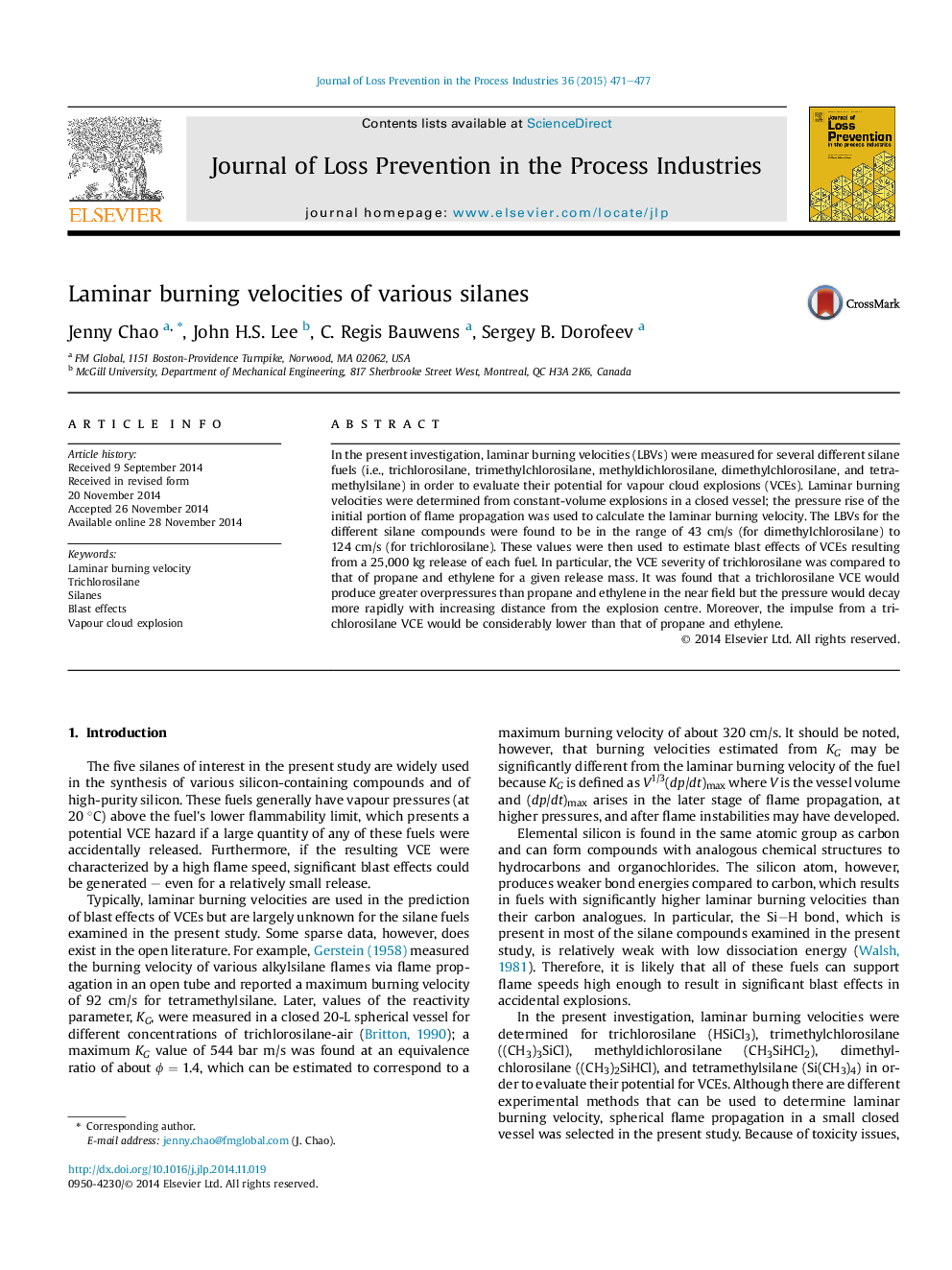| Article ID | Journal | Published Year | Pages | File Type |
|---|---|---|---|---|
| 6973253 | Journal of Loss Prevention in the Process Industries | 2015 | 7 Pages |
Abstract
In the present investigation, laminar burning velocities (LBVs) were measured for several different silane fuels (i.e., trichlorosilane, trimethylchlorosilane, methyldichlorosilane, dimethylchlorosilane, and tetramethylsilane) in order to evaluate their potential for vapour cloud explosions (VCEs). Laminar burning velocities were determined from constant-volume explosions in a closed vessel; the pressure rise of the initial portion of flame propagation was used to calculate the laminar burning velocity. The LBVs for the different silane compounds were found to be in the range of 43Â cm/s (for dimethylchlorosilane) to 124Â cm/s (for trichlorosilane). These values were then used to estimate blast effects of VCEs resulting from a 25,000Â kg release of each fuel. In particular, the VCE severity of trichlorosilane was compared to that of propane and ethylene for a given release mass. It was found that a trichlorosilane VCE would produce greater overpressures than propane and ethylene in the near field but the pressure would decay more rapidly with increasing distance from the explosion centre. Moreover, the impulse from a trichlorosilane VCE would be considerably lower than that of propane and ethylene.
Related Topics
Physical Sciences and Engineering
Chemical Engineering
Chemical Health and Safety
Authors
Jenny Chao, John H.S. Lee, C. Regis Bauwens, Sergey B. Dorofeev,
